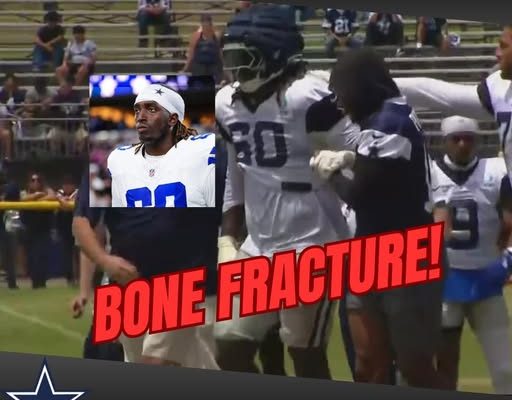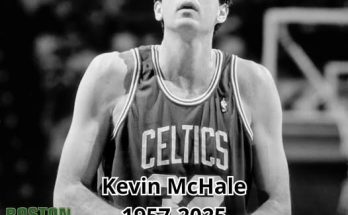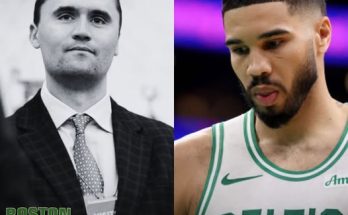Tyler Guyton, a promising athlete whose resilience and determination have made him a key figure in his team’s lineup, recently faced a challenging moment in his sports career. In a situation that could have had devastating consequences, Guyton narrowly avoided a severe ACL tear—a dreaded injury that often sidelines players for an entire season or even jeopardizes their future in the sport. However, the relief was somewhat tempered by the diagnosis of a bone fracture, an injury that carries its own hurdles and uncertainties. This fracture is expected to keep him out of action for a period ranging between four to six weeks, although a return as early as Week 1 of the season remains a possibility. This article explores the nature of Tyler Guyton’s injury, the implications for his team, and the broader context of athlete recovery and resilience, providing a comprehensive understanding of what lies ahead for him.
The moment when any athlete sustains an injury can be a turning point in their career. For Tyler Guyton, the scare of a possible ACL tear was a significant blow, both physically and psychologically. The anterior cruciate ligament (ACL) is one of the major stabilizing ligaments of the knee, and an injury to it often results in extensive rehabilitation, surgical intervention, and a long road back to competitive play. The fact that Guyton avoided this worst-case scenario is a testament to both the prompt and accurate medical evaluation and perhaps a bit of luck in how the injury occurred. Nevertheless, the discovery of a bone fracture does not mean an easy path to recovery. Bone fractures can vary widely in severity and impact, and even though they are generally considered less complicated than ligament tears, they still require careful management, rehabilitation, and patience.
The specifics of Guyton’s bone fracture have not been fully disclosed in public reports, but it is understood to be significant enough to warrant a four to six-week recovery timeline. This timeframe suggests that the injury, while not catastrophic, is certainly more than a minor stress reaction or a small crack. Bone healing follows a predictable biological process involving several stages: inflammation, bone production, and bone remodeling. The initial phase involves the body’s immediate response to the fracture, including swelling and pain. This is followed by the formation of new bone tissue that eventually bridges the fracture gap. Finally, remodeling strengthens the bone over time to restore its original shape and function. For an athlete like Guyton, the challenge is not only in waiting for the bone to heal but also in maintaining conditioning, avoiding muscle atrophy, and gradually reintroducing physical stress to the injured area without risking re-injury.
The possibility of a Week 1 return highlights both the optimism of the medical staff and the player’s own commitment to recovery. Returning to competitive action shortly after a bone fracture would require a well-structured rehabilitation program, including physical therapy focused on restoring range of motion, strength, and proprioception. Additionally, the player and team medical personnel must carefully monitor the healing progress through imaging studies and clinical assessments to ensure that the bone has healed sufficiently to withstand the rigors of high-level competition. This cautious approach helps mitigate the risk of complications such as non-union (where the bone fails to heal properly) or re-fracture, which could extend the recovery period dramatically.
For Tyler Guyton’s team, this injury situation represents a delicate balancing act. On one hand, they have a talented player whose contributions on the field are valuable and whose leadership can inspire teammates. On the other, rushing a player back too soon from injury can lead to setbacks that not only affect the individual but can also impact team dynamics and performance. Coaches and medical staff must work in unison, carefully weighing the benefits of early return against the risks involved. They must also consider alternatives such as modifying Guyton’s workload, providing additional support during practices and games, or even temporarily shifting team strategies to accommodate his absence if the recovery takes longer than expected.
The psychological aspect of Tyler Guyton’s injury and recovery should not be underestimated. Athletes often identify strongly with their physical capabilities, and an injury can challenge their sense of identity and confidence. The uncertainty of recovery timelines, the frustration of limited mobility, and the fear of reinjury can contribute to mental stress. It is critical for Guyton to receive not only physical rehabilitation but also psychological support to maintain a positive outlook and mental resilience. Many professional sports organizations have recognized this need and incorporate mental health professionals as part of their rehabilitation teams, offering counseling, motivational strategies, and coping mechanisms.
Looking beyond the immediate recovery period, Guyton’s experience with this injury can be a pivotal moment in his athletic development. Injuries, while unfortunate, often serve as catalysts for athletes to gain deeper insights into their bodies, improve their training techniques, and enhance their overall approach to health and fitness. The time away from the field, while difficult, can provide an opportunity to focus on other aspects of athletic preparation such as nutrition, mental conditioning, and film study. These elements can contribute to a more well-rounded and informed athlete who is better equipped to perform at a high level once fully healed.
Moreover, this injury serves as a reminder of the physical demands and risks inherent in competitive sports. The human body, despite its remarkable capabilities, is vulnerable to injury, especially in high-contact, high-intensity activities. Preventative measures such as strength training, flexibility exercises, and proper technique are essential components in reducing injury risks. Teams and organizations continue to invest in sports medicine research, advanced diagnostic tools, and innovative rehabilitation protocols to better protect athletes and enhance recovery outcomes. Tyler Guyton’s case adds to the ongoing narrative of how modern sports medicine can effectively address injuries that might have once ended careers.
From a fan perspective, Tyler Guyton’s injury and his potential return timeline will be a topic of much discussion and speculation. Fans understand the rollercoaster of emotions that come with following their favorite players through highs and lows. The hope is always for a swift and full recovery, allowing the athlete to return stronger and more determined. For Guyton, the support of the fanbase, teammates, and coaching staff can be a powerful motivator that fuels his rehabilitation efforts. Positive reinforcement and understanding during this period can help ease the pressure and contribute to a healthier recovery environment.
In summary, Tyler Guyton’s recent injury scare and subsequent bone fracture diagnosis encapsulate the challenges and complexities faced by athletes dealing with injuries. Avoiding an ACL tear was undoubtedly a relief, but the bone fracture still presents a significant hurdle that will require time, effort, and careful management to overcome. The projected four to six weeks of recovery, coupled with the optimistic possibility of a Week 1 return, speaks to the hopeful yet cautious approach taken by the medical team and the player himself. This situation highlights the importance of comprehensive medical care, psychological support, and strategic team planning in navigating the uncertainties of athletic injuries. As Guyton embarks on his recovery journey, his determination and the support surrounding him will be critical factors in his eventual return to the field, where fans and teammates alike eagerly



